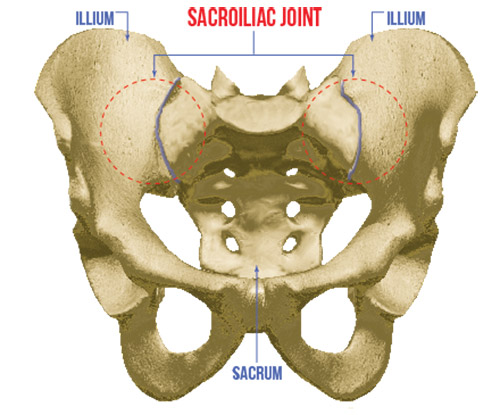 The sacroiliac joint rests between your hips and your spine. Even though it’s a common cause of low back pain, there is no clear cause of painful sacroiliac joint (commonly known as SI joint dysfunction). Luckily, this condition is not dangerous and typically can be managed without surgery. Though the condition is painful, there are holistic methods for managing the discomfort caused by SI joint dysfunction.
The sacroiliac joint rests between your hips and your spine. Even though it’s a common cause of low back pain, there is no clear cause of painful sacroiliac joint (commonly known as SI joint dysfunction). Luckily, this condition is not dangerous and typically can be managed without surgery. Though the condition is painful, there are holistic methods for managing the discomfort caused by SI joint dysfunction.
Causes of Sacroiliac Joint Pain
Your doctor or chiropractor may not be able to diagnose the exact cause of your SI pain, though there are some commonalities among sufferers. For example, many people with SI joint pain have a history of pregnancy (of course, the same can be said for a large portion of the population). They also may have one leg that is shorter than the other.
Like the knees and hips, the sacroiliac is a synovial joint, making it susceptible to the same types of pain, such as rheumatoid arthritis and psoriasis. It may also become infected due to septic arthritis (when bacteria settle in the joint). This condition may, in fact, require surgery. However, the reason for the surgery is to drain the infection, not repair the joint itself.
Trauma may also cause SI joint dysfunction, such as occurs after a car accident. For example, the act of braking often causes the force of the impact to travel up the leg and into the pelvis, injuring the SI joint.
Symptoms of Sacroiliac Joint Damage
The most common symptom of sacroiliac joint dysfunction is pain in the lower back, directly over the joint and typically only over one side. Of course, general lower back pain is often a sign of SI joint damage. If pain increases when you bend backward, joint inflammation is the likely culprit. If it increases when you bend forward, you’re probably looking at strained ligaments surrounding the joint.
The pain may also travel beyond the SI joint, through the buttocks and down the leg, much like the pain from lumbar disc herniation or sciatica. It may also cause secondary problems, such as feet, hip, or knee issues. This is due to the changes in your gait resulting from SI pain.
Detecting Sacroiliac Joint Damage
Your chiropractor begins SI diagnosis by taking your complete medical history and asking questions about your symptoms and pain. This includes items such as whether the pain is worse or better in certain positions or after performing certain activities, and whether you experienced any trauma or injury that may be causing your pain. He or she will also want to know your medical history, such as whether you or an immediate blood relative has received an arthritis diagnosis.
After discussing your medical history, your doctor conducts a physical examination, including checking your posture and gait. He or she will also test strength, sensation, and reflexes to ensure the pain originates from the SI joint and not another spinal condition.
If the doctor suspects that infection or arthritis may be causing your SI pain, he or she may order a series of laboratory tests, such as blood work, x-rays, and/or an MRI. Your chiropractor may also perform a diagnostic injection, in which he or she injects an anesthetic directly into the joint, numbing it. If you experience no pain while the joint is anesthetized, SI joint dysfunction is the logical diagnosis.
Treating SI Joint Dysfunction with Spinal Manipulation
In treating sacroiliac joint pain through spinal manipulation (chiropractic adjustment), your doctor releases oxygen, carbon dioxide, and nitrogen from the joint by stressing the joint beyond its normal range of motion (though within physical boundaries).
The patient lies on his or her back or side, with the top knee bent and raised toward the chest. Your chiropractor then stretches the low back and pelvic area by pressing the bottom shoulder forward, placing one hand over your sacroiliac joint.
What to Do when You Feel SI Joint Pain
After making an appointment with your chiropractor to assess your pain, you can manage your symptoms until your appointment decreasing inflammation. This means limited physical activities and applying ice to the area for five to 10 minutes at a time. After your chiropractic treatment, your doctor may recommend exercises to stretch and strengthen the area.
If you currently suffer from sacroiliac joint pain, contact the team at Bluestone Chiropractic Group today.

